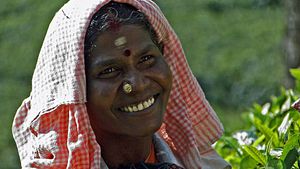Editor’s Note: This article is the second in a two-part series. Read part one here.
While Hindi is doing well in India, the other official languages of India are also still going strong. In particular, four other big languages are thriving in addition to Hindi. The number two and three languages are also Indo-Aryan like Hindi: Bengali, with 97 million speakers, and Marathi, with 83 million speakers. Interesting, all of India’s three largest languages are each the direct descendants of the three major post-Sanskritic languages of classical and medieval India. These prakits (natural languages, as opposed to Sanskrit, which means “refined”) were Shauraseni, Magadhi, and Maharashtri, spoken in the north, east, and the Deccan: Hindi, Bengali, and Marathi are their direct descendants, respectively, by way of various intermediate stages, such as the Apabhraṃśa (“corrupt” in relation to Sanskrit) languages. These languages all emerged in their oldest forms slightly more than a millennium ago.
The rise and spread of Bengali is particularly notable. Because it is also spoke in Bangladesh by over 150 million people, it is the subcontinent’s second largest language after Hindi-Urdu, with over 250 million speakers. Its spread in northeastern India, often due to migration, is a cause of alarm in many of the small states in that region.
India’s fourth and fifth biggest languages are the two largest Dravidian languages by speakers, Telugu with 81 million, and Tamil with 69 million. Telugu and Tamil belong to different branches, central and southern respectively, of the Dravidian family, and are quite distinct from each other, with Telugu demonstrating a much stronger Sanskrit influence.
Birth rates have been declining in South India, so the growth of Telugu and Tamil has plateaued, along with the neighboring Dravidian languages of Kannada and Malayalam. However, the Telugu and Tamil film industries are both booming, and the use of those languages remain vigorous.
English
Finally, English has continued to grow as a second language for much of India’s educated middle classes. Although exact data is not available, a previous census indicated that 125 million people spoke it as a second language, a number that has undoubtedly at least doubled by now, if not more, as the widespread code-switching among the educated middle classes would suggest.
In particular, English as a written medium retains a particular prestige in India, unmatched by any of the country’s indigenous languages. Shop signs, menus, and the titles of major movies (which are actually filmed in Hindi and other Indian languages) throughout India are in English. This situation will continue to persist, and resembles what linguists call a diglossia, wherein two languages (in India’s case, the regional language and English) are used by the same community in different social settings, and for different purposes, usually formal and informal. A similar diglossia between English and native languages exists in the Philippines.
Other Languages
India is famous for its linguistic diversity, being home to thousands of languages, dialects, and linguistic variations. However, in the next century, much of that diversity will disappear as dialects and closely related languages are absorbed into standardized forms. Despite the fears of activists, none of India’s major, official languages are in any danger. The vast majority of India’s endangered languages are spoken by small numbers of individuals, and are Sino-Tibetan languages clustered on its mountainous northern and eastern extremities. However, as has been the case in Europe and East Asia, it is inevitable that as mass communication and education spread, India’s linguistic diversity will be reduced. Nonetheless, despite the spread of English and globalization, India’s top five languages remain particularly vibrant.

































